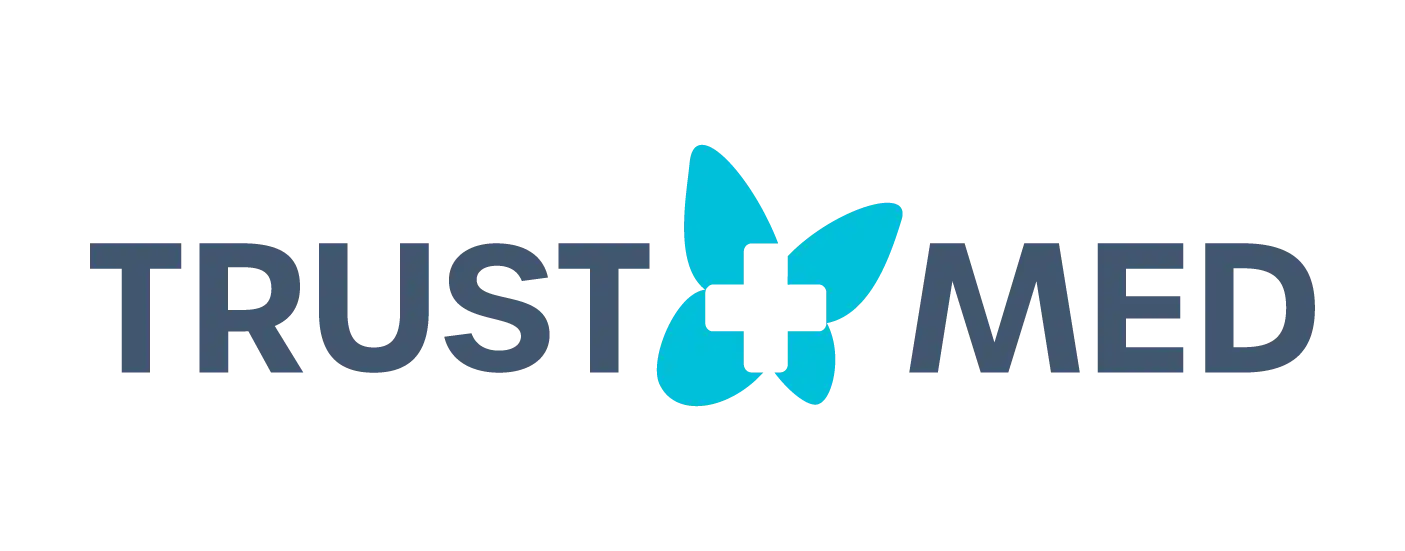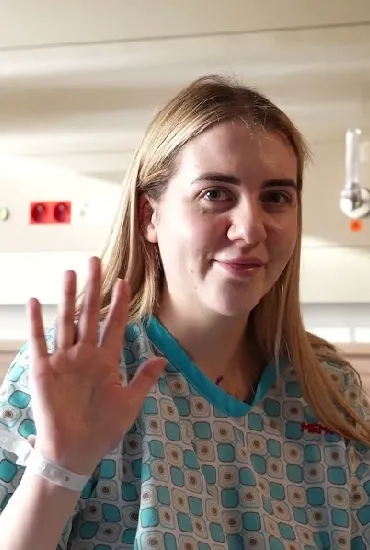Rhinoplasty(Nose Job)
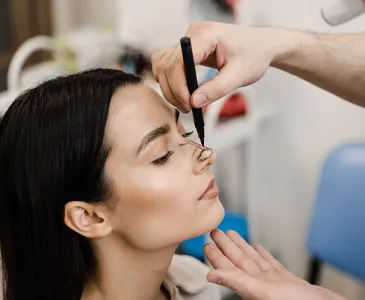
Rhinoplasty

Rhinoplasty
Your dream of a beautiful appearance is now within reach! At TrustMed, we specialize in rhinoplasty, a surgical procedure aimed at reshaping the nose for aesthetic or functional purposes. Our expert team is dedicated to supporting everyone's journey towards a confident smile. Nose aesthetics not only enhance outward appearance but also boost self-assurance. We are here to accompany you every step of the way, ensuring that your experience is smooth and personalized.
What is Rhinoplasty?
Rhinoplasty, commonly known as a "nose job," is a surgical procedure aimed at reshaping the nose to improve its appearance or function. It can address a variety of concerns, including altering the size, shape, or angle of the nose, correcting nasal asymmetry, narrowing the nostrils, or improving breathing difficulties.
During the procedure, the surgeon makes small incisions either inside the nostrils (closed rhinoplasty) or across the columella (the strip of tissue between the nostrils) and inside the nostrils (open rhinoplasty). Through these incisions, the surgeon carefully reshapes the underlying bone and cartilage to achieve the desired aesthetic outcome.
Rhinoplasty is a highly individualized procedure, tailored to each patient's unique anatomical features and aesthetic goals. It requires meticulous planning and surgical skill to achieve natural-looking results that harmonize with the overall facial appearance. After the procedure, patients typically experience some swelling and bruising, with final results gradually becoming apparent as the healing process progresses.
Overall, rhinoplasty can have a transformative impact not only on the appearance of the nose but also on the patient's self-confidence and quality of life. It's essential to consult with a board-certified plastic surgeon who specializes in rhinoplasty to discuss your specific concerns and goals and determine the most suitable treatment plan for you.
Rhinoplasty at a glance
Rhinoplasty
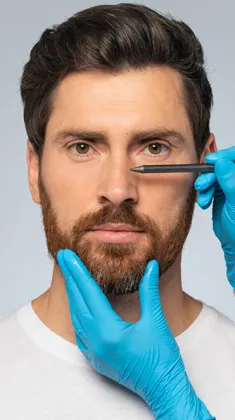
Who are the ideal candidates?
- Those bothered by nasal appearance issues.
- People experiencing functional problems.
- Non-smokers or those willing to quit.
- Committed to following pre and post-operative care instructions
Cosmetic & Plastic Surgery
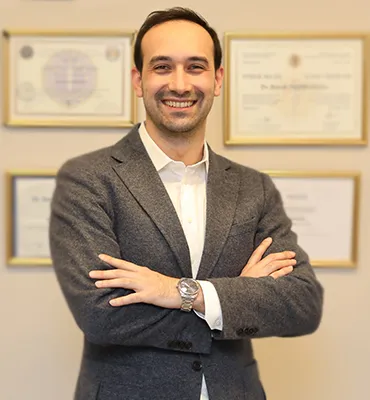

Dr. Burak Pasinlioğlu
Aesthetic & Plastic Surgery
Frequently Asked Questions about Rhinoplasty
While discomfort and swelling are common after rhinoplasty, any pain can be managed with prescribed pain medication provided by the surgeon.
The initial recovery period typically involves swelling, bruising, and nasal congestion. Most patients can return to work and regular activities within 1-2 weeks, but full recovery may take several months.
With closed rhinoplasty, scarring is usually minimal as incisions are hidden inside the nostrils. In open rhinoplasty, there may be a small scar on the columella, but it tends to fade over time and is barely noticeable.
The results of rhinoplasty are generally long-lasting and can be permanent. However, the outcome may continue to refine and settle over several months as the swelling subsides.
Yes, rhinoplasty can address structural issues within the nose that contribute to breathing problems, such as a deviated septum or nasal valve collapse.
Risks and complications may include infection, bleeding, adverse reaction to anesthesia, asymmetry, overcorrection, and dissatisfaction with the aesthetic outcome. However, serious complications are rare when performed by a skilled surgeon.
Yes, rhinoplasty can be combined with procedures such as septoplasty (to correct a deviated septum), chin augmentation, or eyelid surgery for comprehensive facial rejuvenation.
Yes, after rhinoplasty, the nose is typically taped and supported by a splint or external nasal cast for about a week to help maintain its new shape and reduce swelling.
Strenuous activities and exercise should be avoided for several weeks after rhinoplasty to prevent injury and minimize swelling. Your surgeon will provide specific guidelines based on your case.
Rhinoplasty is focused on reshaping the external appearance of the nose and should not affect the vocal cords or alter your voice.
While wearing glasses may be uncomfortable immediately after rhinoplasty due to the nasal splint and swelling, most patients can resume wearing glasses once the splint is removed and swelling subsides.
Yes, rhinoplasty can address a crooked or deviated nose by straightening the nasal bridge and realigning the nasal septum for improved symmetry.
Yes, many patients experience improved self-confidence and satisfaction with their appearance following rhinoplasty, especially if they were self-conscious about their nose before the surgery.
It's common to experience some numbness or reduced sensation in the nose after rhinoplasty, but this typically resolves as the nerves regenerate during the healing process.
Reversing rhinoplasty is complex and may not always be possible. It's essential to communicate openly with your surgeon during the consultation to ensure your goals and expectations are understood before proceeding with the surgery.
When selecting a surgeon for rhinoplasty in Turkey, consider factors such as the surgeon's experience, qualifications, before-and-after photos of previous patients, patient reviews, and your comfort level during the consultation. It's essential to choose a board-certified plastic surgeon with expertise in rhinoplasty to achieve the best possible results.
JCI CERTIFICATION
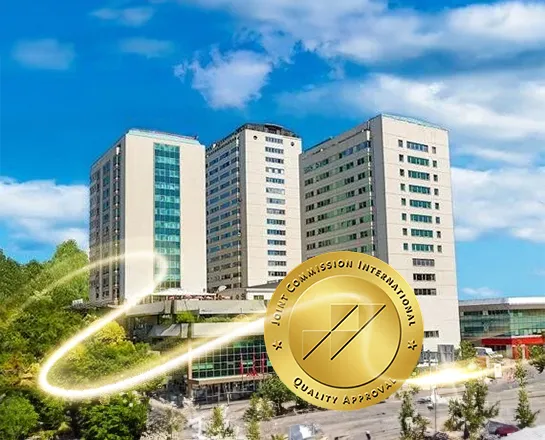
In line with the importance we attach to quality and reliability in healthcare services, our clinically contracted hospitals are certified by JCI (Joint Commission International) to comply with international standards. JCI certification plays a key role in guaranteeing the quality and reliability of the healthcare services we provide to our patients. Under contract with TrustMed, the hospital, located in Şişli, is a point where healthcare excellence, advanced technology and strategic accessibility meet. This medical facility is a testament to advanced technology and infrastructure, with a team of nationally and internationally recognised specialists offering warm and personalised services to its patients.
Regular audits are critical to ensure that our hospitals consistently deliver high quality services. In this way, we strive to best meet the healthcare needs of our patients and provide a safe healthcare environment.
Explore the operation further
With its advanced healthcare infrastructure, experienced surgeons, and competitive prices, Turkey has solidified its reputation for providing quality healthcare services to international patients. Rhinoplasty, popular among those seeking to change the shape and size of their nose for aesthetic reasons, enjoys widespread popularity. Many clinics in Turkey such as TrustMed have gained patients' trust by offering high-quality services in their specialized fields. Those undergoing rhinoplasty in Turkey can expect treatment in modern facilities under the care of expert surgeons, alongside the opportunity to explore the country's rich historical and cultural heritage.
What Is Rhinoplasty?
Rhinoplasty, also known as a nose job, is a medical procedure where surgical or non-surgical techniques are used to alter the shape, size, or function of the nose. These procedures are typically performed for aesthetic reasons and are chosen when an individual is dissatisfied with the appearance of their nose. Rhinoplasty can also be used to address breathing issues or correct nasal deformities. These procedures aim to enhance overall facial aesthetics by making the shape and size of the nose more harmonious and balanced.
Why Do People Get Rhinoplasty?
People may have various reasons for undergoing rhinoplasty:
- Aesthetic Appearance: Many people may be dissatisfied with the shape or size of their noses and may prefer to undergo rhinoplasty to achieve a more aesthetic appearance. Even minor changes in the nose's shape can have a significant impact on a person's face and positively alter their overall appearance.
- Correcting Nasal Deformities: Congenital or trauma-induced nasal deformities can negatively affect a person's appearance and confidence. Rhinoplasty can be an option to correct these deformities and achieve a more balanced nasal profile.
- Improving Breathing Problems: Some individuals may experience difficulty breathing due to anatomical or structural issues in their noses. Rhinoplasty can help facilitate breathing by widening or correcting passages within the nose, thus alleviating breathing problems.
- Boosting Self-Confidence: Many individuals feel that their confidence diminishes when they are unhappy with their noses. Rhinoplasty can increase self-confidence and help individuals feel more comfortable in social and professional settings.
- Repairing Post-Traumatic or Post-Surgical Deformities: Rhinoplasty may be necessary to correct nasal deformities resulting from accidents, injuries, or previous surgeries. In such cases, rhinoplasty can provide both aesthetic and functional improvements.
What Are Some Types Of Rhinoplasty Surgery?
In Turkey, rhinoplasty is typically performed by expert plastic surgeons using modern techniques. Rhinoplasty methods can vary depending on the patient's needs, nasal structure, and the surgeon's preferences. The most commonly used rhinoplasty techniques are as follows:
- Open Rhinoplasty: In this method, a small incision is made on the nose to provide broader access to the nasal structure. The surgeon exposes the nasal cartilage and bone structures to make the necessary corrections. Open rhinoplasty allows for detailed work and precise shaping.
- Closed Rhinoplasty: Closed rhinoplasty is a technique performed with an incision inside the nose. In this method, an incision that is not visible from the outside is made, and the surgeon accesses the nasal cartilage and bones through this incision. Closed rhinoplasty leaves a less visible scar, and the recovery process is generally shorter.
- Ultrasonic Rhinoplasty: In this innovative method, nasal bones and cartilage are shaped using ultrasonic devices. Ultrasonic rhinoplasty can provide more precise and predictable results and may accelerate the healing process.
- Temporary Rhinoplasty with Nose Fillers: In some cases, temporary rhinoplasty can be performed as a non-surgical option. In this procedure, filler substances are injected to change the shape and size of the nose. This method offers temporary results and provides a non-surgical option.
Since every patient is different, the decision on which rhinoplasty method to use is made collaboratively by the surgeon and the patient. This decision depends on the patient's desires, anatomical structure, and the surgeon's expertise.
